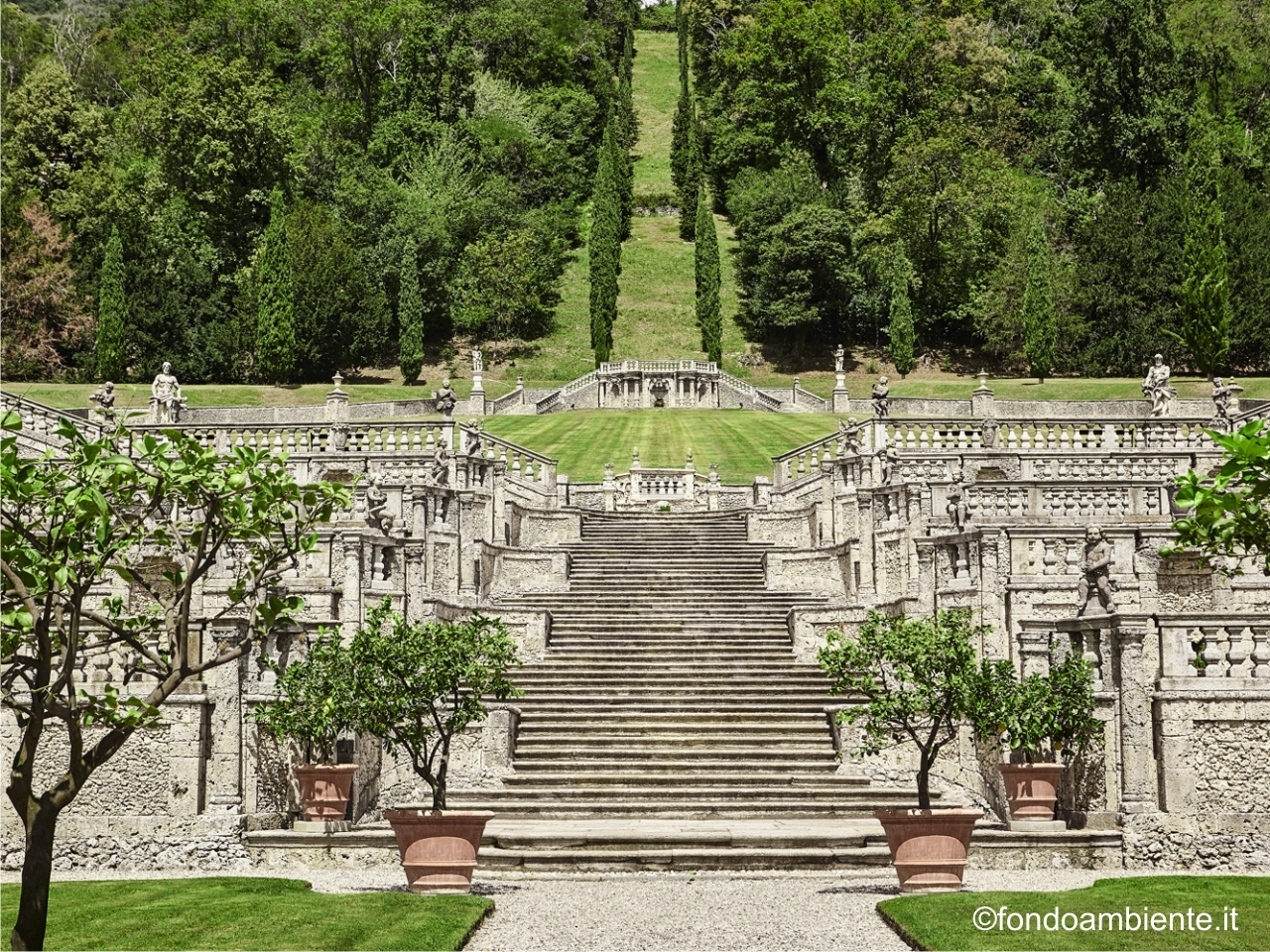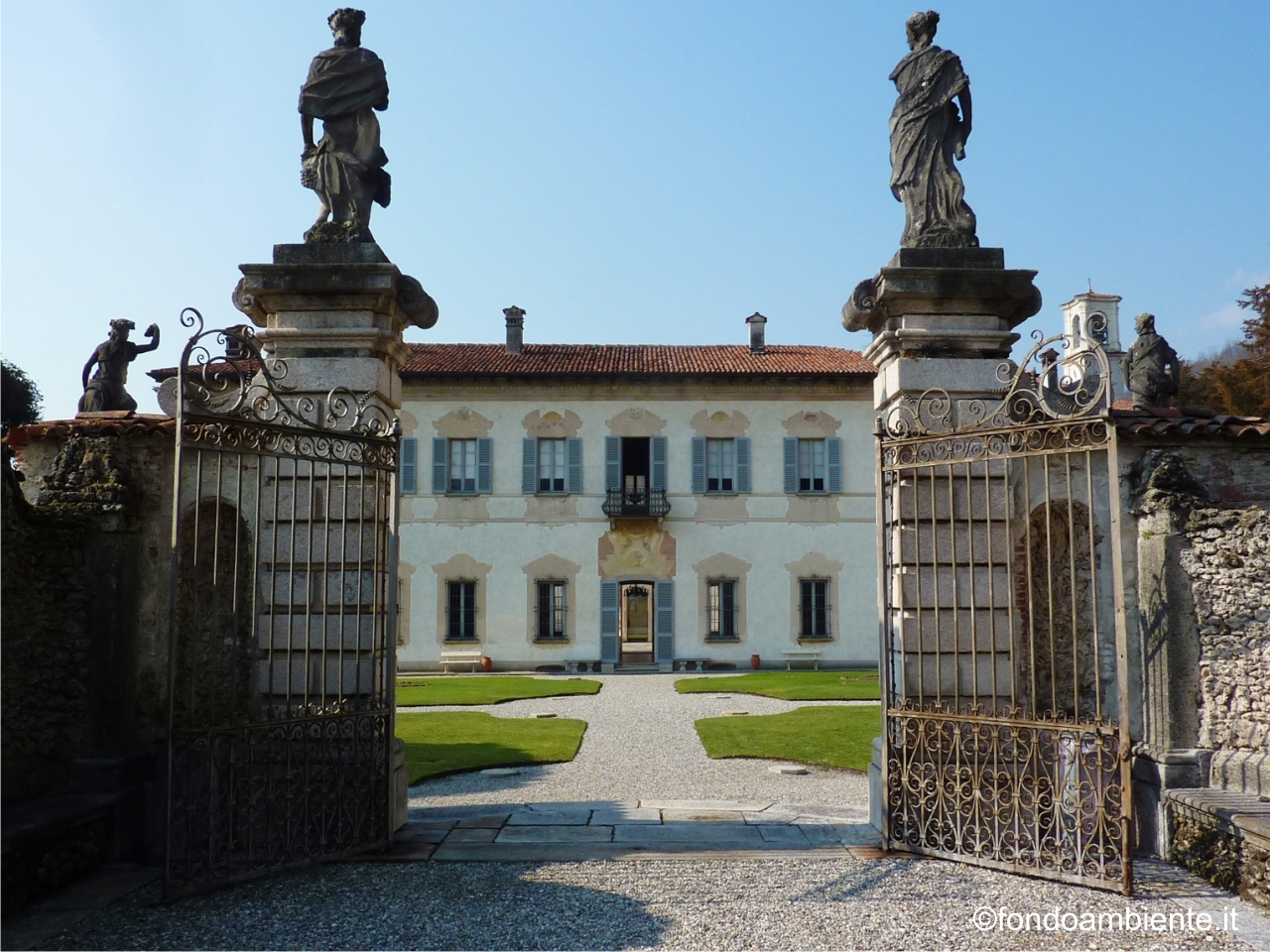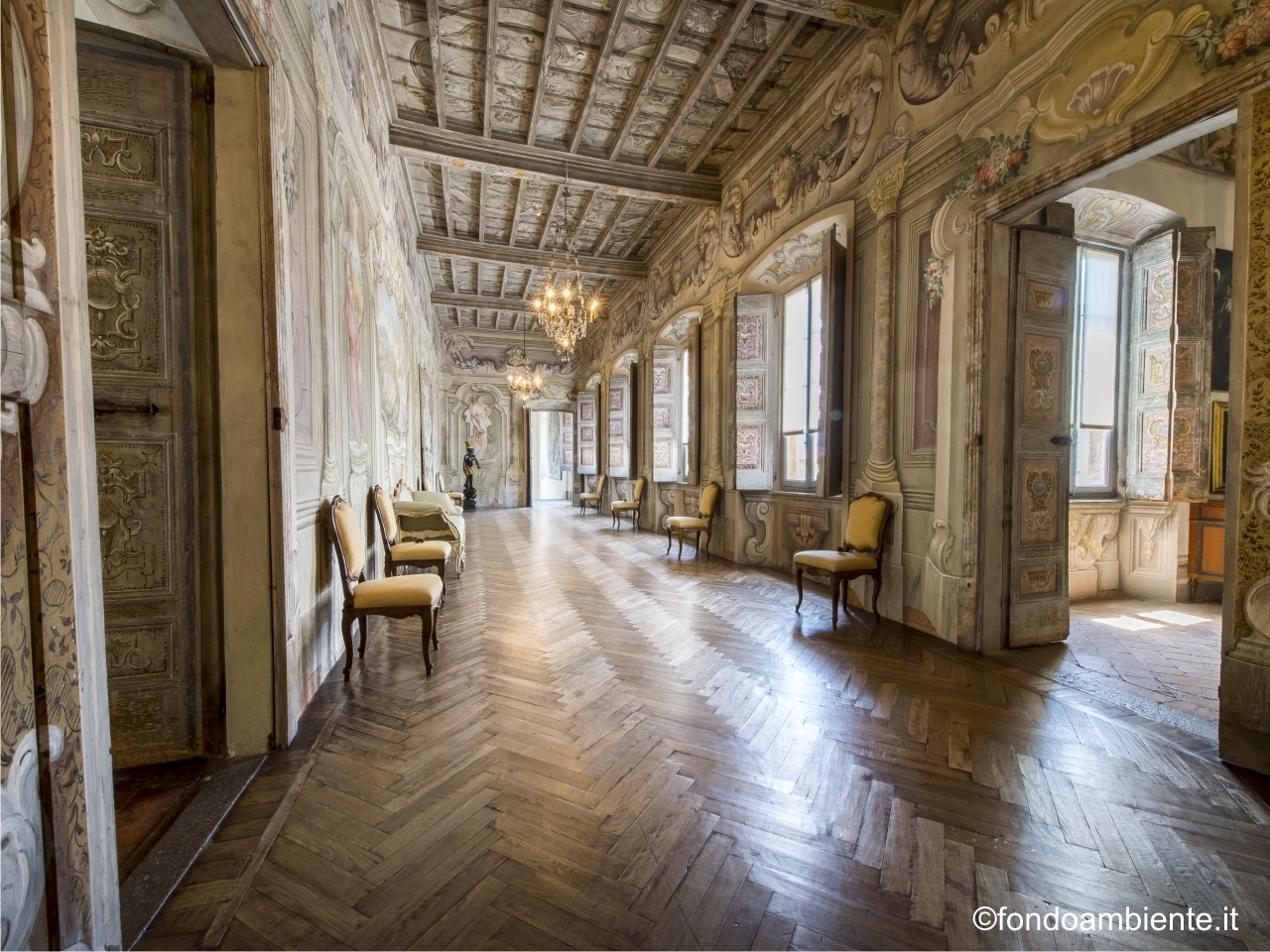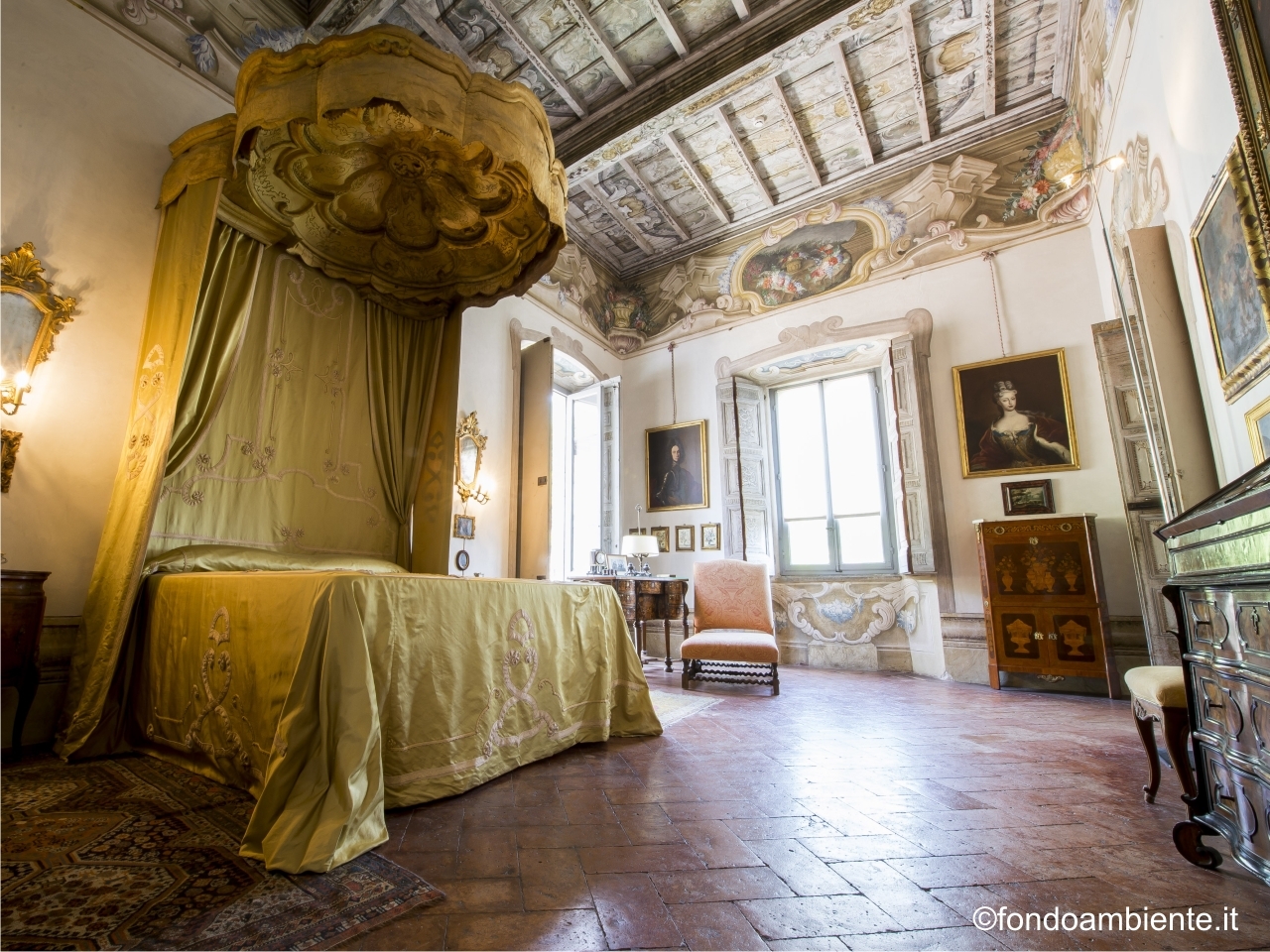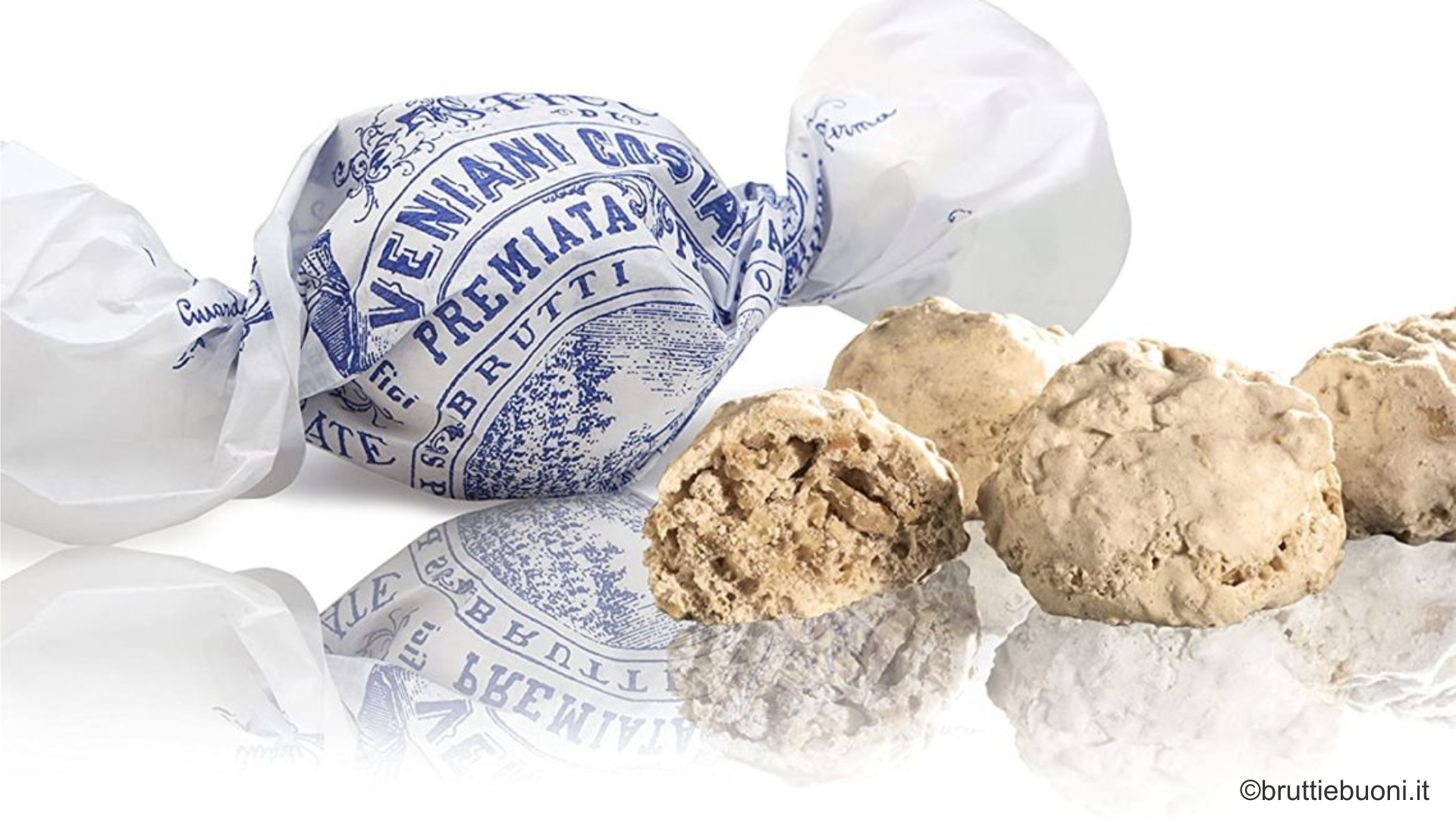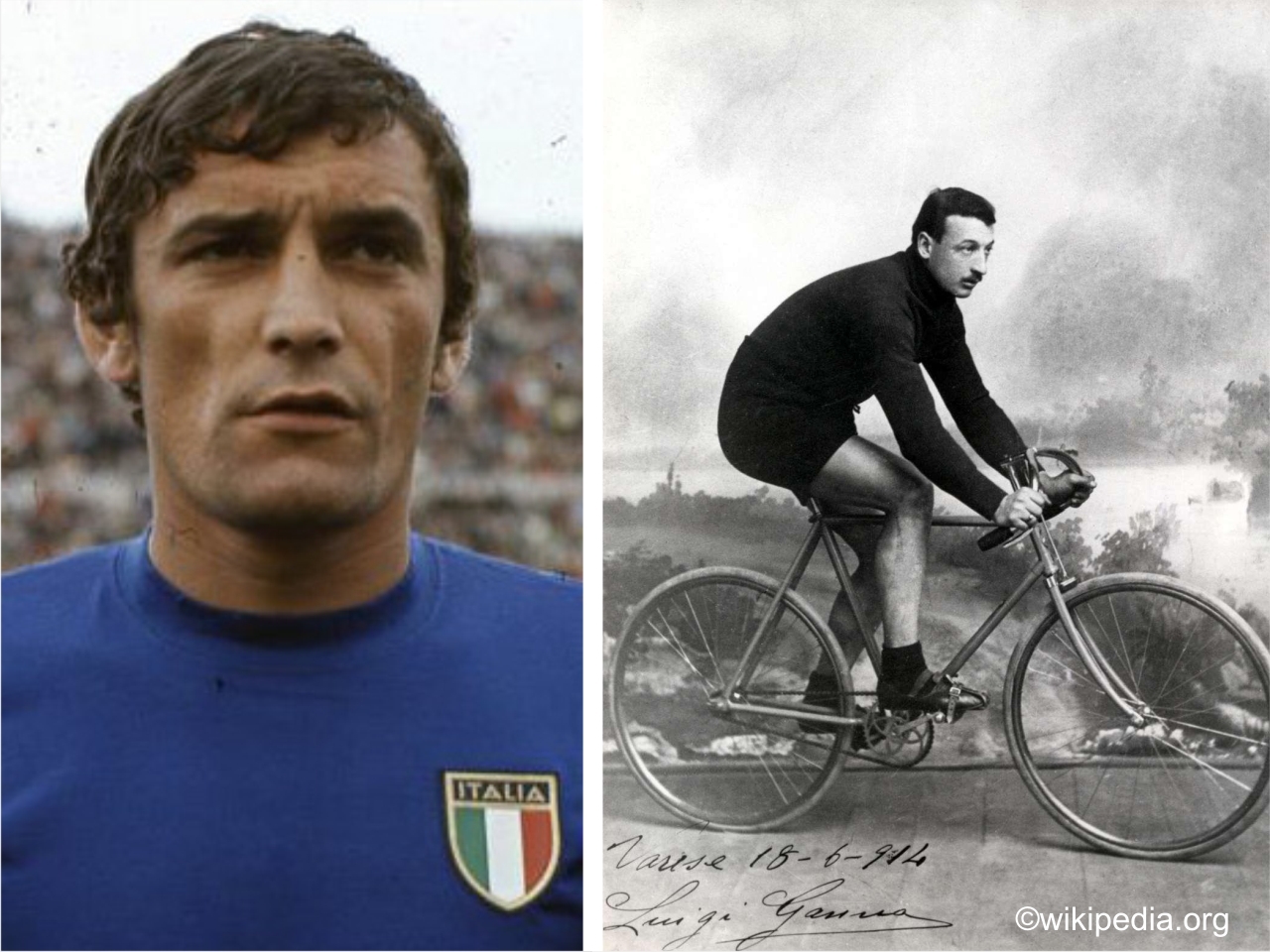Learn more about the province of Varese where is located the designer’s hometown from her own words. A little corner of paradise just a few kilometers from Milan where scenes of unquestionable beauty combine with ingrained cultural and industrial traditions.
A characteristic geomorphic variety
I am very attached to the area where I was born and raised: the Province of Varese, or “Varesotto”. This area, known for its concentration of glacial lakes, rivers and protected natural areas, is one of the twelve provinces of the Lombardy region. The province is located along the axis that leads from Milan to neighboring Switzerland. This specific area is also identified as part of the historical region of Insubria, inhabited by the Celtic population in the 7th and 4th centuries BC. An area which includes the Provinces of Como, Varese and the Canton of Ticino in Switzerland.
The territory sits at the foot of the majestic Alps and then extends into the rich Po Valley crossing verdant hilly areas. This characteristic geomorphic variety reflects the many different towns present in the area. Also, the numerous vocations inherent in the people who live there and who have contributed, over the millennia, to its territorial, commercial and cultural development. As it is attested by the four sites declared World Heritage Sites by UNESCO.
In the video below, there is a selection of photos by Luca Sacchet. A mechanical designer by profession, who, through his passion for photography, gives expression to his love for his territory. His photos underline the beauty of the breathtaking landscapes of this splendid part of Italy. The pictures are often chosen as “photo of the day” in online portals and by organizations that promote tourism in the Varese area. In an interview with the online news site www.varesenews.it, he tells of how he loves capturing moments of the landscapes he encounters during his excursions. Also, he talks about how he is inspired by the spectacle of the transformation of nature as the seasons pass. Instagram luca__sacchet
A recent visit of Chinese vice president Wang Yi
The Province is easily accessible thanks to well-developed infrastructures and the presence of the nearby Milan Malpensa Intercontinental Airport. This is just a few minutes from Gallarate, the city where I live. Recently, on the way back to the airport, the Chinese vice president and foreign minister Wang Yi made a surprise visit to the city center. He was accompanied by the Chinese ambassador to Italy, Li Junhua, and the consul in Milan, Xuefeng Son. They admired the basilica and had a quick lunch in a restaurant in the square.
The mayor and the councillor of commerce welcomed them by giving them a book that tells the story of Gallarate. The deputy premier, thanking them for the welcome and complimented them on how well kept the square was. Also, he noticed the quality of the food and the beauty of the basilica. As today, the article is on the local online portal . What an honor!
The geographical area
Varese Province borders Switzerland to the north and north-east, while to the south it is adjacent to the province of Milan. While, to the south-east to the province of Monza and Brianza, to the east to the province of Como. Finally, to the west to the region of Piedmont. The total area extends for 1,198 sq km and, as of 12/31/21, counts around 878,000 inhabitants. The luxuriant vegetation that hosts numerous wild animals makes it one of the green lungs of Lombardy. It sits first among the provinces for the quantity of urban forests, making up 32% of the whole region. While, it ranks third in terms of forest area which reaches 44% against the 47% reached by both Como and Lecco. In the following maps, are the locations of the reference areas.

Settlement of people since prehistoric times
Its favorable geographical position has long constituted an important axis for communications between continental Europe and peninsular Italy. Also, this has contributed to the settlement of peoples since prehistoric times, as proven by the numerous finds uncovered in the Isolino Virginia complex in Biandronno hosted in the Civic Prehistoric Museum. The archaeological investigations at the site, recognized by UNESCO in 2011 and which began in the 1860s, are still ongoing and are bringing to light the oldest pile-dwelling settlement in the Alpine Arc, which dates back to 5300 B.C. and is considered among the most important settlements from the Neolithic period.
Golasecca Civilization
In the protohistoric period, the early Iron Age between the 9th and 4th centuries BC, the area between the valleys of the Po tributaries, in particular the banks of the Ticino, and the Verbano in the lower Lake Maggiore area, was the subject of settlements of a particularly evolved Celtic civilization who were well organized politically, economically and socially. These civilizations founded Milan and the other cities of northern Italy, forming the so-called “Golasecca civilization”, from the area along the Ticino where the first findings date back to the excavations carried out in 1822 by Abbot Giovanni Battista Giani. The colonization of the province of Varese by the Romans began in the 3rd century B.C. and slowly transformed these Gallo-Insubre Celtic areas into small vassal states destined for the commercial and cultural expansion of the Empire.
The Castelseprio Archaeological Park and the Torba Monastery, included in the UNESCO list in 2011, are some of the most significant testimonies of the early Middle Ages in northern Italy and of the presence of the Lombards here between 568 and 774 A.D. Between the 10th and 14th centuries, the area became an important medieval borough as part of the county of Seprio, formerly Insubria, and later became the Duchy of Milan, first governed by the archbishop and then by the Visconti, while at the same time maintaining a significant level of autonomy.
Rocca Borromeo
The province was given the task of acting as a protective belt, defending Milan from transalpine invasions. Thus numerous castles, fortresses and towers were fortified in the Lombard Gothic style taken from churches and baptisteries that are still well preserved today. A magnificent example of a fortified medieval building is the Rocca in Angera, purchased by the Borromeos in 1449. It stands in a dominant position above the city on top of a limestone hill that leads down towards Lake Maggiore. Founded in 1988 by Princess Bona Borromeo Arese, the Rocca houses the largest Doll and Toy Museum in Europe which is known for the quality, variety and rarity of its collection. In the gallery are photos from www.isoleborromee.it
Majestic residences
After the fall of the Viscontis came the Spanish domination which lasted from 1525 to 1700, and which was then followed an Austrian government. In late 18th century, the Duke of Modena and Lord of Varese Francesco III d’Este had his majestic residence built in Varese. It consist of a building that is now the Town Hall, and which had magnificent annexed gardens that were among the most beautiful in Italy. So, the city became one of the most refined Italian courts.
In fact, thanks to the beauty of the local landscape, as far back as 16th century the province developed its vocation for tourism. It became a holiday resort chosen by the noble families of Lombardy, which led to the proliferation of accommodation architecture and private residences, but also to countless churches, places of worship and the devotional path along the slopes of the Sacro Monte di Varese, which has been a UNESCO site since 2003, marking the start of a grandiose Baroque and neoclassical period.
Villa della Porta Bozzolo
Among the finest examples of noble buildings in the province is the Villa della Porta Bozzolo near the village of Casalzuigno. Originally was a country villa dating back to the 16th century, which in the 18th century became a prestigious noble residence. It was enriched with one of the most sophisticated decorative sequences of the century. Expecially an imposing Italian garden with a Baroque-style staircase that is one of the most majestic and spectacular in Italy.
The residence belongs to the FAI, the National Trust for Italy, an association for the protection and safeguarding of Italian cultural heritage. This, along with the Torba Monastery, the tram shelter and the Velate Tower, the Villa and Panza collection in Varese and the recent Casa Macchi in Morazzone, means there are six FAI properties in the province of Varese. This makes the province with the most FAI properties in all of Italy. A record to be proud of! Photo www.fondoambiente.it
French domination
With General Napoleon Bonaparte’s Italian campaign of 1796 to 1797, France conquered all of northern Italy, which then became part of the Cisalpine Republic. French rule was consolidated in 1805 with the coronation of Napoleon Bonaparte as King of Italy in the Cathedral of Milan. Under French domination, the province of Varese saw great social and economic changes with the abolition of the feudal system and the end of an economy based on the possession of land. Incentives were given to the new entrepreneurial bourgeoisie class, which led to the advent of industrialization. With the French defeat at Waterloo in 1815, this vast province remained under Austrian rule until the victory of Giuseppe Garibaldi and his men in the battle of Varese in May 1859 during the Risorgimento.
The newborn Kingdom of Italy
In 1861, the newborn Kingdom of Italy invested in industrial, manufacturing and urban development, promoting significant economic enrichment of the province which became, between the end of the 19th century and the beginning of the 20th century, one of the most important production centers in Italy, and a center of reference for architects and craftsmen chosen by the flourishing bourgeoisie of the time, and by the Art Nouveau movement, called Liberty or Floral style in Italy, whose peak coincided with the International Exhibition of modern decorative art in Turin in 1902.
Grand Hotel Campo dei Fiori
Since 2014, Varese has been included in the Art Nouveau Network as one of the top 14 most significant European cities. Evidence of this artistic-cultural fervor can be seen in the countless civilian homes, factories, workers’ villages, large hotels, the Kursaal and the cemetery chapels designed in those years. The most famous architect working in the Varese capital, Giuseppe Sommaruga, designed the imposing Grand Hotel Campo dei Fiori on Monte Tre Croci in 1908, built between 1910 and 1912, and which is one of the most significant examples of Italian Liberty style. Unfortunately, it has been abandoned since 1968 following the decline of the flow of tourists due to the closure of the funicular in 1953.
But interest in the “sleeping giant” has grown again and it made a comeback on the occasion of the visits organized by the FAI in 2017 to mark the centenary of the death of Sommaruga, making the hearts of the people of Varese flutter again, and making them hope there may be a great relaunch of the hotel. In 2018, the director Luca Guadagnino shot some scenes of his film Suspiria, a remake of the famous 1977 film by Dario Argento, there. In the gallery are postcards from that era and photos by Luigi Matteoni www.instagram.com/luigi_matteoni
A remarkable industrial development
Was favored by the wide availability of electricity produced by the plants of Vizzola Ticino, on the Gallarate moors. The 71 km-long Olona river which starts at Varese in the Fiori regional park and reaches as far as Rho, became the hub of the province’s economic system which was linked to its waters. Apart from domestic purposes, the waters were also used for watering livestock, fish farming, manufacturing building components, washing wool, retting flax or hemp, and much more.
Furthermore, the presence of numerous mills used for the maceration of cereals led to the appearance of the first textile factories, a natural evolution of the artisan weaving activities which were carried out in the peasants’ homes in the winter, during their break from work in the fields.
The textile industrial tradition
The first great entrepreneurs in the area were textile merchants who wanted to expand their business by building mechanized plants for the industrial spinning of cotton by adapting the hydraulic mechanisms that provided movement to the already existing mills. For the most part, the industries that settled there belonged to the textile, leather goods, mechanical, aeronautical, paper, printing and food sectors. Among the most important historical companies are those in the textile sector which are located throughout the province but concentrated in Gallarate and Busto Arsizio, where the former Carlo Ottolini (later Bustese) cotton mill, which was founded in 1887 and closed in 1978, has housed the Textile and Industrial Tradition Museum since 1997.
The historic shoe factory
The province is still an internationally renowned fashion district which counts among its ranks important historical tanneries and shoe factories such as the Calzaturificio di Varese founded by the Trolli family at the end of the 19th century, now no longer active, which, between the 60s and 70s became the most important shoe factory in the world, producing and selling one million pairs of the DiVarese brand of shoes a year in 60 stores throughout Italy. Moreover, the shoe factory invented the shoe size numbering system still used today due to the need to define standard measures for large-scale processing. In the gallery are advertising posters from 1914-72
Goldsmith tradition
Of note, still within the fashion sector, are the historic goldsmith’s shops in Gallarate and the Ossola goldsmith’s shop in Varese, founded by Gino Ossola who took over the business in 1919 from Santini goldsmith’s, and lastly Mazzucchelli, which was founded in 1849 in Castiglione Olona, which specializes in the production of cellulose acetate used mainly for the production of eyewear.
Today, the best-known brands in the fashion and household linen sector owned by companies in Varese are Missoni and Brunello for clothing, Parah, Yamamay and Garda for underwear, Artioli, Brunate, Macchi 1941, Caretti and Vibram for footwear, Grignola and Samsonite for leather goods, and Fazzini for linen.
Also of note is the pipe sector, which exports pipes to smokers all over the world, with the three most historic factories built in the province being. Fratelli Rossi which was founded in Barasso in 1886 and closed in 1991, and which was the largest pipe factory in the world; at the same time there was the Fratelli Lana di Gallarate pipe manufacturers, today marketed under the name Lorenzo Pipe; and lastly the Fabbrica Pipe di Carlo Cesesa, founded in Cassano Magnago in 1890 and which closed in 1925. This pipe making tradition has continued into modern times in Gavirate where the Bianchi company, today called Gigi Pipe, supplies pipes to the Italian Army.
Metalworking sector
Other particularly important historic companies can be found in the metalworking sector engaged in aeronautical construction, companies such as Caproni of Vizzola Ticino which was founded in 1910 and taken over in 1980 by Agusta and which merged into the state-owned Leonardo in 2015, and Aermacchi, founded in 1913, deriving from previous car bodywork companies, and an entire series of large, small and medium-sized production businesses, all of which are testimony to a historic tradition of flying that developed around the Milan Malpensa Airport area, so much so that the province of Varese is called the “province with wings”.
Varese industries in the engineering sector are also known for the production of motorcycles, hence the nickname “land of motorcycles”. Also the province makes use of a chain of companies starting from Frera in Tradate, built in 1905 and that closed in 1936, and which, since 2005, has housed the Frera Motorcycle Museum, and also the MV Agusta founded in 1945, and which has now moved to Varese after various changes of ownership. The equipment sector is also of importance. For heating and air conditioning there is the company Argoclima, founded in 1929, and for electric parts, there is BTicino founded in 1936 then purchased by the Legrand group in 1989.
Food industry
After the Second World War, other important companies were also set up, such as Ignis, a manufacturer of household appliances, founded in 1943, then incorporated into Whirlpool. The territory with its “niche sectors“ has also played an important part in the history of the Italian food industry with a number of historic companies still in operation.
Rossi d’Angera distillery founded in 1847, the Angelo Poretti Brewery of Induno Olona founded in 1876 in Valganna, an area near Varese famous for its pure water, the Lazzaroni confectionary company founded in Saronno in 1888 and which enveloped previous artisan producers dating back to the 1700s, Mera & Longhi founded in 1896, which is the oldest Italian candy factory, the Colombo distillery founded in 1900 in Cardano al Campo, the Lindt & Sprungli chocolate factory, formerly Bulgheroni, founded in 1909, Irca di Gallarate which since 1919 has been dedicated to the manufacture of food products for the bread and pastry sector, the Prealpi dairy company founded in 1922 and the Ernesto Brusa Confetti factory in Varese which dates back to 1930. There are numerous local and DOP products made from the raw materials that this wonderful land with its lakes and hills offers.
Traditional desserts
The province of Varese is, in fact, a land rich in gastronomic products and traditions ranging from polenta, fresh pasta and rice to cold cuts and cheeses, meat and fish, fruit and vegetables, honey and desserts. In fact, this area of Lombardy is one of the most interesting in terms of traditions linked to desserts.
In the gallery, are photographs of the simple but tasty traditional sweets of the province such as the Varese cake, created in the late 1930s by Zamberletti as a sweet symbol of the city. Amaretti di Saronno were created in 1712 as a gift to Cardinal Benedetto Erba Odescalchi on a visit to the city’s sanctuary. Brutti e Buoni di Gavirate created in 1878 by Veniani. Gallarate amaretti biscuits created with the ‘help’ of a cat at the beginning of the 20th century by the pastry chef Furlandoni. Epiphany camels whose origin dates back to the beginning of the 20th century and were created by an unknown baker, and lastly.
Finally, the Buosino, made with hot chocolate laced with coffee, milky foam and a spoonful of chocolate. It’s a sweet drink created in 1999 by Buosi (there is also a cold version), on the occasion of the opening of their second shop in Varese which soon became an icon of the city.
Traditional pastries
The excellence of traditional Varese pastries is demonstrated by the presence of numerous pastry shops and chocolate shops with a long artisan tradition. Also, by the ever-increasing number of certifications of quality, with the town’s inclusion in the Gambero Rosso guide Pasticceri e Pasticcerie. The guide gaves their award to five pastry shops, as well as to the veteran Denis Buosi di Varese, Bacilieri di Marchirolo, Sara and Mariano di Morazzone, Chiara di Fabio Longhin in Olgiate Olona, and Zamberletti di Gavirate and Varese, which is now closed. After careful selection, in 2022, the Buosi pastry shop in Varese was also admitted to the Association of Excellent Italian Pastry Shops presided over by the Master of Italian Pastry Chefs, Iginio Massari.
Sport tradition
Varese sport has also had its moments of glory since the 1900s. In addition to football, the main national sport, with the champion Gigi Riva, top scorer in the history of the Italian national team, other sports have been and still are mainstays of the area’s passion for sport, such as cycling which has produced several stars, from Luigi Ganna, winner of the first Giro d’italia in 1909, to Ivan Basso, from Alfredo Binda to Claudio Chiappucci, and moreover, since 1919, the area has also hosted the Tre Valli Varesine race.
Or gymnastics, and fencing which has been practised since 1878 with the Società Varesina, one of the oldest sports clubs in all of Italy, where gymnast Jury Chechi, nicknamed ‘the Lord of the Rings’, has trained since 1984, this nickname coming from his numerous victories in the ‘still rings’ event between 1989 and 1996, or the Virtus of Gallarate club founded in 1902 with the champion gymnast Boris Preti. And then swimming, with Nicolò Meneghini, the first Italian to win a world gold medal in the 50 and 100 breaststroke events, this in 2022; roller skating, rowing which has been practised since 1927 and, even older, the first horse racing club in 1878, as well as tennis.
The great Ignis
There were many memorable national and international successes in the 60s and 70s related to basketball. Expecially with the champion Dino Meneghin, the best European player of all time according to the magazine Giganti del Basket (Giants of Basketball) with the “great Ignis”, who scored numerous records that still stand today, and who in 2016 was inducted into the Basketball Hall of Fame. Volleyball and artistic and acrobatic gymnastics are among the most popular women’s sports.
In addition to these are ice sports such as hockey, skating, cross-country skiing and curling. Finally, motor sports, in particular, the world championship with the Varese manufacturers Cagiva, and MV Agusta, the second most successful manufacturer ever after Honda, with twelve world titles won by the most successful rider in history Giacomo Agostini, in the Superbike category. Then again the MV Agusta and Parking Go, in motor racing with the drivers Alessio Rovera, and in rally racing with the drivers Andrea Crugnola and Damiano De Tommaso.
The sportiest province of Italy
As proof of how widespread sport is in the area – I myself practiced artistic and rhythmic gymnastics as a child, and cycling during my adolescence – in 2021 the province was elected ‘the sportiest province of Italy.” The Il Sole 24 Ore infact ranking it based on the number of members, excellent sports facilities. Also, the results at the last 2020 Tokyo Olympic and Paralympic Games with the bronze medals of Nicolò Martinenghi in the 100 breaststroke, bronze of Gemma Galli synchronized swimming team, silver for Giorgia Bordignon in weightlifting, and gold for Federica Cesarini in double rowing.
At an administrative level, the current province was established in 1927 with the advent of the Fascist government. It contributed to the spread of the rationalist style with important redevelopment projects in the city centres, in particular the capital Varese. With the global economic crisis between 1980 and 1982 resulting from the oil crisis of the previous years, the province of Varese downsized its industrial production and organised various industrial areas in addition to the historical ones, including areas for rubber-plastic processing, the chemical-pharmaceutical sector and the telecommunications sector.
The origin of my story
In the flat lands located in the south of the province of Varese, the city of Gallarate stands out, and this is where my whole personal adventure starts. Besides being my hometown and the place where I currently live, if it weren’t for its industrial history and textile vocation, my parents would never have met! In the 1960s, during the full economic boom of post-war development, Italians from every region arrived in Lombardy.
My mother
One of these was my mother who relocated as a girl from Veneto, in north-eastern Italy, to work at the Carminati weaving mill in Gallarate. She moved with some sisters to the surrounding area, Samarate, to be precise, where my father lived. He saw her for the first time on a bicycle ride, and was struck by her beauty. They met and got married a few years later in 1973. After I came into the world, my mother left her job to devote herself to my brother, born the year before, and to me. At the time, it was customary to have clothes made by a seamstress. It was she who introduced me to the world of fashion as a child with specific terms such as a godet skirt, pleats, ruffles… She was a woman who was always elegant, who never left the house if not perfectly groomed.
My father
Her was born and raised in San Macario, a district of Samarate, and ran a restaurant and grocery store with his brothers and parents. The shop became a point of reference for the town. As a wonderful chef, my grandfather, cooked local dishes from traditional Lombard cuisine for customers. While, for us at big Christmas lunches, he brought to the table specialties. Particularly, fresh ravioli stuffed with mixed meat, with braised meat, veal with tuna sauce and galantine of veal. However, as a boy, my dad found time to practice in a goldsmith’s workshop in the village. He told me that he loved the goldsmith’s trade right from the start as he found it constructive and artistic.
Mix of my parents
I am aware that I have been very lucky, and thanks to this, I have been able to concentrate on my career and not have to worry about anything else. My dad was my first fan, he always supported me and pushed me to follow my ambitions. He believe in my abilities, and always reminded me that, sooner or later, hard work and perseverance always lead to success. I feel I am a perfect mix of my parents, I have my mum’s aesthetics and femininity, and my dad’s strength and resourcefulness.
A mix that also reflects their origins: the Lombards are known for being cold and minimal, I might even say “essential”. While the Venetians are more colourful and figurative. My drawings also seem to depict the fusion of these two worlds. On one side, the colour and romantic decorativeness of the Venetians, and the concreteness and industriousness of the Lombards.
Villa Montevecchio
An example that represents the mentality of the population of my area well, and which I believe in very deeply myself, is the Latin inscription by Virgil Labor vincit omnia, which means “work conquers all things”. This iscription is placed on the family crest on the facade of Villa Montevecchio of Samarate, the city where I grew up. The villa was built in 1897 and acquired with its park by the Municipality in the 70s, and has become a symbol of the city. Villa Montevecchio was the prestigious residence of the entrepreneur and fellow citizen Carlo Ricci. He made his fortune starting as a shop boy and then becoming the owner of a large hat factory near Monza.
The villa was built in the Lombard neo-Sforza architectural style, between Romanesque and Renaissance. It typically features exposed terracotta walls, stone ornaments, graffiti and fresco decorations. While, is surrounded by a large park with a garden and balustrades in front of the main entrance. The external and internal decoration was carried out by Ernesto Rusca of Milan, who had already worked in the Sala delle Asse at the Castello Sforzesco. He realized fairy-tale version of “castle” decor with geometric motifs, garlands of flowers, leaves and fruits, stars, streamers, ribbons, shields, scrolls and suggestive writings. Today, the villa is the venue for cultural events and weddings. Photo www.wikipedia.org
The history of Gallarate dates back to ancient times and is full of charm and culture
The town covers an area of about 20 sq km and today has over 50 thousand inhabitants. To compare, 80 thousand/54 sq km in Varese, 83 thousand/30 sq km in Busto Arsizio and 1.3 million/182 sq km in Milan. Gallarate is 19 km from Varese, 40 km from Milan and 12 km from Milan Malpensa airport. Over the millennia it has become an important town both in the province of Varese and in Lombardy. This is thanks to the people who have lived there, their ingenuity, industriousness, profound entrepreneurial spirit, generosity, cult of memory and artistic and intellectual skills. In addition to being historically and culturally linked to Milan and the Varese area, the story of its history intersects with Florence. Also, illustrious personalities such as Alessandro Manzoni, Giuseppe Garibaldi, Gabriele D’Annunzio, Napoleon, Princess Sissi, Pope John II and Ernest Hemingway.
Learn more about the city of Gallarate
Return to Meet the designer





